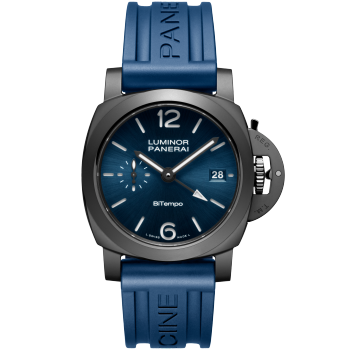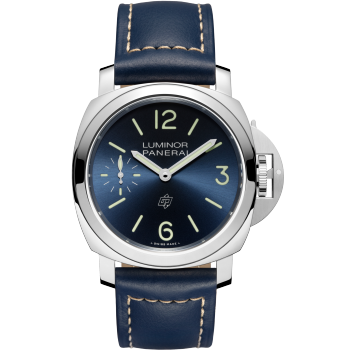Available online
Luminor
Luminor, the essence of Panerai, is a symbol of Italian design and Swiss Watch-Making. Recognizable, solid and iconic, Luminor features the patented crown-protecting device.
Discover more about Luminor Collection-

Luminor Marina Bronzo PAM01678 Luminor Marina Bronzo
PAM01678
-

Luminor Marina PAM01759 Luminor Marina
PAM01759
-

Luminor GMT Ceramica PAM01783 Luminor GMT Ceramica
PAM01783
-

Luminor Marina PAM03312 Luminor Marina
PAM03312
-

Luminor Marina PAM03313 Luminor Marina
PAM03313
-

Luminor Marina PAM03314 Luminor Marina
PAM03314
-

Luminor Marina PAM03323 Luminor Marina
PAM03323
-

Luminor Marina Titanio PAM03325 Luminor Marina Titanio
PAM03325
-

Luminor GMT Ceramica PAM01460 Luminor GMT Ceramica
PAM01460
-

Luminor Marina Militare PAM05218 Luminor Marina Militare
PAM05218
-

Luminor Tre Giorni Luna Rossa PAM01653 Luminor Tre Giorni Luna Rossa
PAM01653
-

Luminor Chrono Flyback Luna Rossa Titanio PAM01654 Luminor Chrono Flyback Luna Rossa Titanio
PAM01654
-

Luminor Base Logo PAM01623 Luminor Base Logo
PAM01623
-

Luminor Base Logo PAM01087 Luminor Base Logo
PAM01087
-

Luminor Base Logo PAM01086 Luminor Base Logo
PAM01086
-

Luminor Logo PAM01085 Luminor Logo
PAM01085
-

Luminor Logo PAM01084 Luminor Logo
PAM01084
-

Luminor Logo PAM01624 Luminor Logo
PAM01624
-

Luminor Tre Giorni PAM01628 Luminor Tre Giorni
PAM01628
-

Luminor 8 Giorni PAM00914 Luminor 8 Giorni
PAM00914